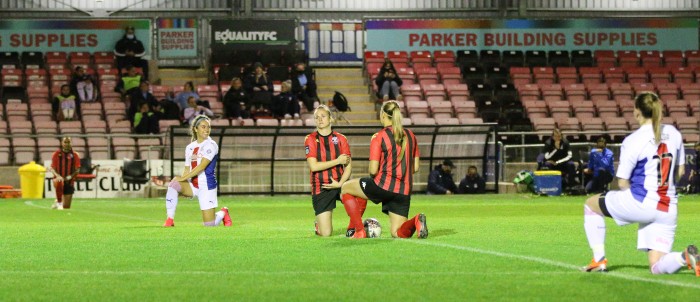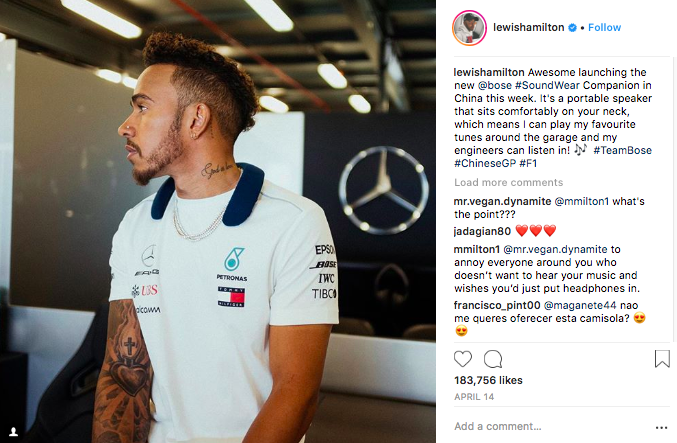Accelerated sponsorship
Key trends have come to the fore due to COVID. Ian Malcolm, President and CEO at Lumency, a brand side sponsorship, experiential and content marketing consultancy, explains why they matter.
Share this post
The pandemic has been an accelerant for so many things, from digital transformation to social justice and medical science – which quickly developed COVID-19 vaccines – to business automation.
It has also made key sponsorship trends move more quickly, bringing both opportunity and risk for brands. As sponsorship marketers, it is our task to find and leverage the opportunities while being aware of, and mitigating, the risks.
We’ve identified 11 important trends that brand marketers should be aware of:
1. The rise of local
Coming out of the pandemic, consumers will seek comfort in the more familiar and the more intimate as they slowly reengage. Since early 2020, supporting local businesses has become something of a social movement. In the Northern Hemisphere, we’re in the midst of another summer of the 500-mile vacation and small, regional, easy-to-access centres are benefiting. Smaller, more local events and properties will gain additional consumer interest and support, a trend we expect to see continue next year.

2. Festivalization
In an increasingly digital world, people – especially younger consumers – are craving more analog experiences. Festivals, often centred around cultural anchor points including food, music, arts, agriculture, provide opportunities for people to come together around human scale experiences.
3. Pressure on attendance
Pre-pandemic, professional sports franchises across North America and Europe were seeing downward pressure on gate attendance and on broadcast audiences. Younger consumers are engaging with sporting events differently, through more snackable pieces of content. The smart sports franchises see themselves as content factories that deliver fan experiences across multiple platforms and in multiple forms. This is changing the economics of professional sports and the value proposition for sponsors.

4. eSports moves mainstream
eSports has benefited from larger audiences through the pandemic and is becoming more sophisticated in how its organised and how it delivers value for sponsors. While still over-speculated from a rights fee perspective, larger brands are finding their way within the space and being welcomed by fans.
5. Shift to digital
The pandemic has forced properties to build new digital assets to satisfy sponsors and to engage with fans. This presents opportunity and risk because when increased fan engagement opportunities come through digital means, the lure of in-venue experiences may have less shine. Nevertheless, this digital transformation is also providing utility to fans and impacting in-venue experiences, including through payment processing, crowd management, concessions management, in-seat commerce.

Players taking the knee in solidarity with the Black Lives Matter movement, July 10, 2020. Source: James Boyes
6. Diversity, equity, inclusion
DEI and a focus on social justice underwent a seismic change in 2020. Leagues, athletes and artists have been using their position to build awareness, start conversations and create sustainable change. These relationships provide an opportunity for sponsoring brands to demonstrate their own brand values around DEI through association and activation, provided the tie back to the brand’s values is authentic and genuine.
7. Sponsor risk management
In the wake of high-profile IOC, FIFA, CONCACAF scandals, and others, consumers have become more willing to penalize property sponsors for the missteps of the property they support. Sponsors need to be more aware of the reputational risks that come through association with sponsored properties and be more thoughtful in how they assess and manage those risks.
8. CSR moves closer
More brands are using their commercial sponsorships to showcase their community investment commitments. This is what we call ‘tribonding’, connecting your brand, your for-profit sponsorship, and a not-for-profit cause partnership through a shared activation platform. Brands are recognizing the importance of measuring and investing in community investment partnerships to drive upper funnel brand health metrics. These community investment partnerships are starting to look more like commercial sponsorships in how they are being evaluated and measured.
9. Touchless experiences
During and post-pandemic a focus on more touchless fan/attendee/patron live experiences has become a necessity. This delivers obvious hygiene benefits, but touchless experiences also move people through spaces more quickly, create less queuing at events and speed payment processing and food and beverage service. Touchless experiences also provide more data capture opportunities, including enabling brands to have consumers use their own mobile devices to engage with experiential activations.

10. The era of the influencer
Over the last three to four years, we have seen a move towards the athlete as the first point of connection for fans in the sports context, especially for younger fans. More and more, the passion connection stack is athlete, then team, then league making fan team allegiance more portable. Influencers can enable brands to become more agile, aligning with these influencers for shorter timescales than traditional property sponsorships.
11. Measure. Measure. Measure
For many organizations sponsorship is the number two marketing spend after media but has remained largely uncontrolled. More tightly managed marketing budgets during the pandemic has meant more scrutiny on spends. For the organizations that were not demanding better measurement from their sponsorship investments going into the pandemic, anticipate a shift in expectations with no turning back.
The post-pandemic world provides tremendous opportunities for brands to engage, build trust and relevance, to demonstrate brand values and to drive business and brand outcomes. Being mindful of these 11 sponsorship trends will help brand marketers guide strategy and optimize those opportunities.



